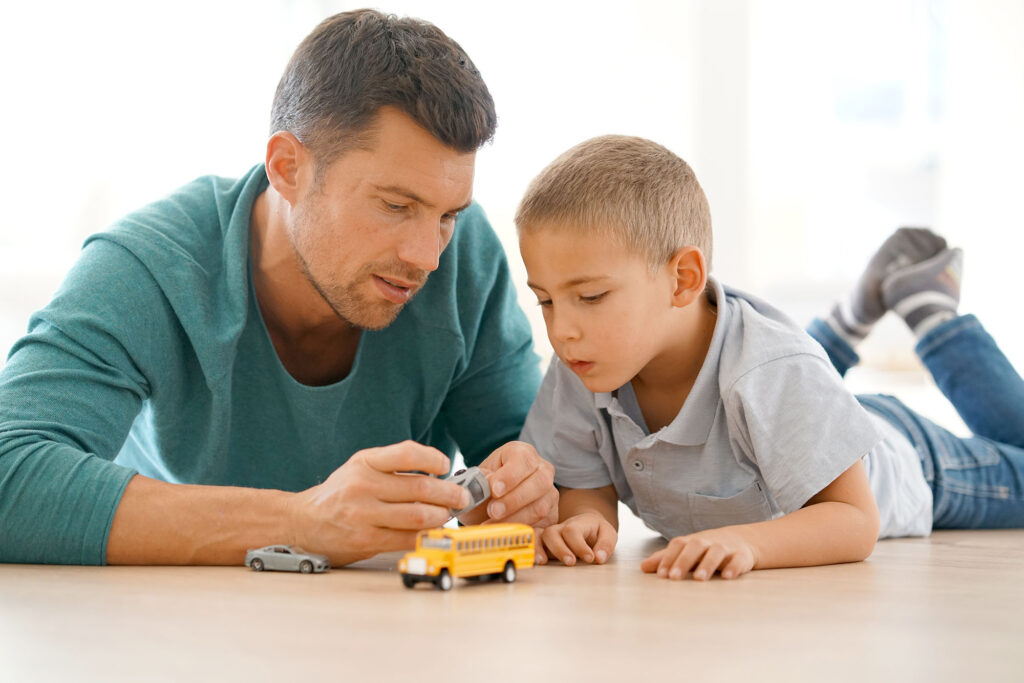First things first! Whenever you are trying to teach your child a new skill, especially when it is something they don’t want to do, YOU need to be in the mental space to react calmly with kindness, patience and understanding. Take care of you! Make sure basic needs are met [no hangry/tired parents or children allowed!]. You may need to arrange for child care if there are other siblings that would detract from your attention. You also need to have plenty of time. Plan for how long you think you’ll need and DOUBLE IT!
Don’t make the mistake of rushing the process! Balance short difficult activities with lots and lots of fun preferred-play. Make sure your child is successful 75%-90% of the time before increasing the challenge. If you increase the challenge too quickly you may see increased tantrums and other negative behaviors. You’ll also create distrust and that will make it harder to teach the new skill in the future.
Week 1: Start with First/ Then
Some children may need very simple and clear instructions. Avoid overly descriptive language such as, “I would like you to sit at the kitchen table first with all your fancy art markers and color me a picture and then you may play with your matchbox cars in the living room.” Sometimes less is more. This is a great opportunity to utilize the “first/then” method. Keep it simple and direct. “ First color, then cars.”
Some children need more time to react between hearing the instructions and actually doing the instructions. You may need to pause between telling your child the two actions and you may need to repeat yourself but give them time (at least 5 seconds) before repeating.
-
-
- “First color”: Provide a simple fun activity, something you already know they enjoy but is not their favorite, (playdoh, painting, coloring) of your choice.
- “Then cars” Follow up with their favorite activity. Aim for 1-2 minutes of play with a favorite toy they can usually transition from easily (avoid screens, junk food, or stimming toys). Let your child interact or play with the “then” activity however they prefer (as long as it is safe). They take the drivers wheel as a reward for following your instructions.
- Redirect your child to the next first/then activity, ask for the toy back, say “bye bye cars” or “wait right here cars” to the toy and allow your child time to transition. It is okay to grasp or touch the toy but don’t snatch the toy away as this can teach grabbing/ taking behavior. Pause between requests count to 10, sing ABCs, or Clean up song, then try again.
- Provide the new cue. “First put on shirt, then more cars”
- Reward, praise and encourage minimal attempts to follow your instruction. Do they pick up the shirt? Great Job! try to facilitate completion but be prepared to stop and wait then redirect if your child starts to react negatively. You are teaching this new skill on their timeline, not yours.
- Once they have mastered the skill of following “first/then” instructions you can start to challenge them with shortening the timeline so it doesn’t take 3 hours to get dressed.
-


